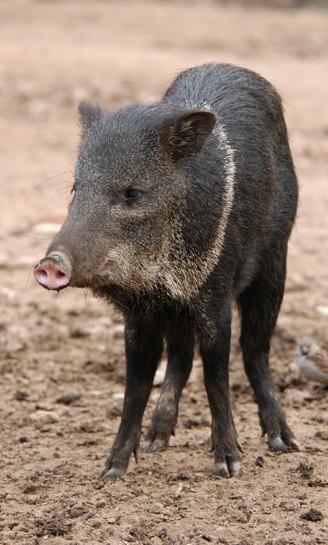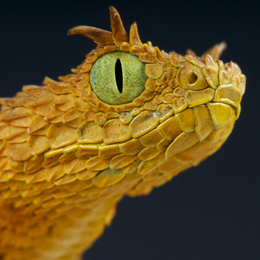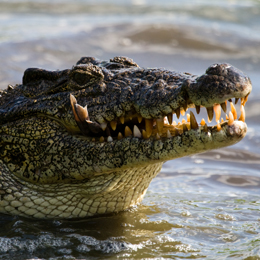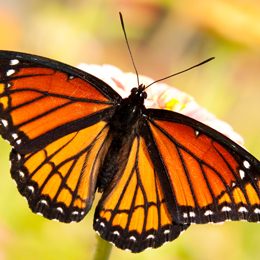Description
The Pecari Tajacu or collared peccary is also widely known as the Mexican hog, Musk hog or the Javelina. They are called collared peccary due to the white hairs around their neck. This white color of the javelina is easily visible, especially due to the contrasting black-grey colored coat of its body. The hairs on the dorsal side are quite long compared to the ones on the lateral part. Males and females of this species have similar looks. They grow at the same rate, but the tusks of males are longer and more clearly visible. The canines of an adult male can have a size of up to 2 inches.
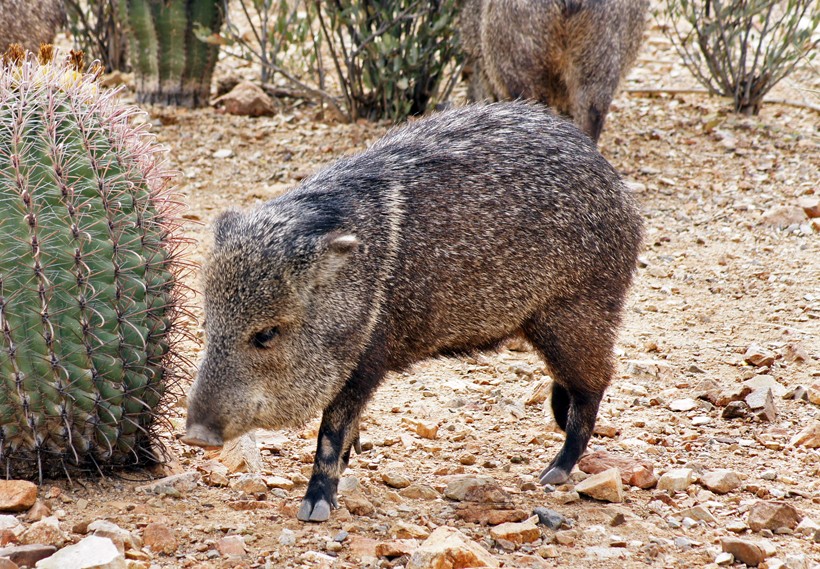
Javelina approaches a fishhook barrel cactus
?
Image credits: chloe7992/Shutterstock
Collared peccaries also have a sturdy body and a thick layer of skin to protect them. Young collared peccaries are brown-yellow in color and have a single black stripe on the back. Due to the distinct coloring of the skin, baby javelinas are often referred to as the “Reds”. There are records of a lifespan over 30 years in captivity. However, in the wild peccaries hardly exceed an age of 15 years as they are frequently hunted by humans and other predators.
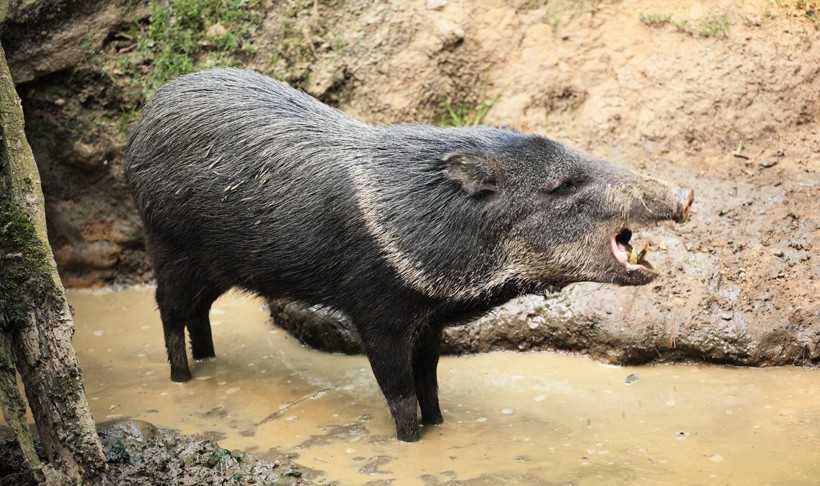
The canines can have a size up to 2 inches.
?
Image credits: jankamenar.com/Shutterstock
An adult javelina weights around 30kg measures over 1.5 meters in length and stands at a height of 60 cm at the shoulder. A collared peccary uses all the 5 common senses to understand its surroundings. It has a very acute sense of smell, allowing it to find food in a wide range of habitat settings. Their eyes are also fairly developed, allowing them to see clearly at night. There are 14 subspecies of collared peccaries:
- P. t. tajacu
- P. t. bangsi
- P. t. angulatus
- P. t. crusnigrum
- P. t. crassus
- P. t. humeralis
- P. t. nelsoni
- P. t. nanus
- P. t. niger
- P. t. patira
- P. t. nigrescens
- P. t. sonoriensis
- P. t. torvus
- P. t. yucatanensis
The subspecies are slightly different from each other in terms of size and color. Subspecies in the north tend to grow larger compared to their tropical relatives. Similarly, the collared peccaries living in desert regions are brownish in colour, while the tropical ones have a darker coat. Collared peccaries look much like boars and hogs of Suidae family, but unlike hogs, the upper canines of collared peccaries grow larger and are very closely aligned with the lower canines. The canine placement is such that the teeth grind against each other every time the javelina opens and shuts its mouth. As a result, the teeth are very sharp and can yield serious damage to any potential threat.
Habitat and predators
Collared peccaries are found in diverse habitats. They inhabit tropical rainforests, shrublands, grasslands, deserts and xeric shrublands. The peccary is a diurnal creature that spends most of the day in search of food and at night, they can be seen taking refuge under tree roots and in caves.
"Collared Peccaries are armed to withstand tropical rainforests, shrublands, grasslands and deserts"
In some regions, the javelina is spotted to be more active during the night, which indicates that the species adapts and changes its habits according to habitat conditions.
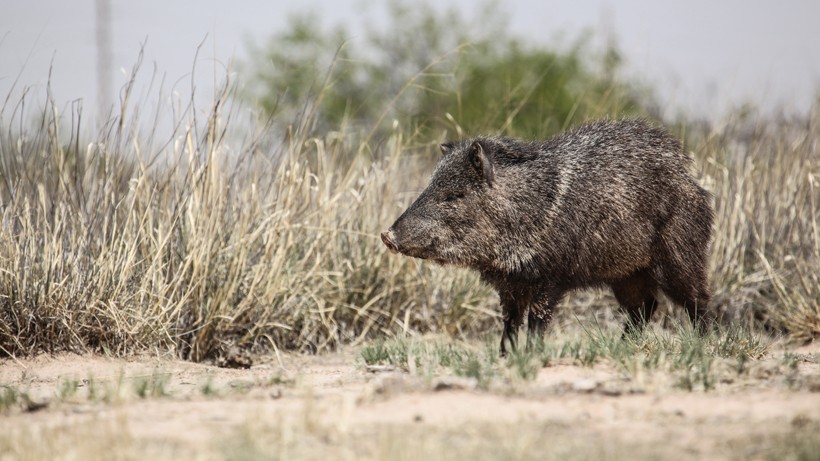
Collared peccary in the southwestern desert/grassland of the united states
?
Image credits: Ingrid Curry/Shutterstock
Collared peccaries live in bands that can consist of 5 to 50 individuals, depending on their population of that particular habitat. They often split into smaller subgroups of 3 to 5 members while feeding. Subgroups often travel far in search of food and reunite afterwards. The javelina has a very simple digestive system, allowing them to feed on a wide range of items. They are omnivorous creatures and can be seen feeding on cactus, grasses, fruits, nuts, insects and occasionally on small snakes as well.
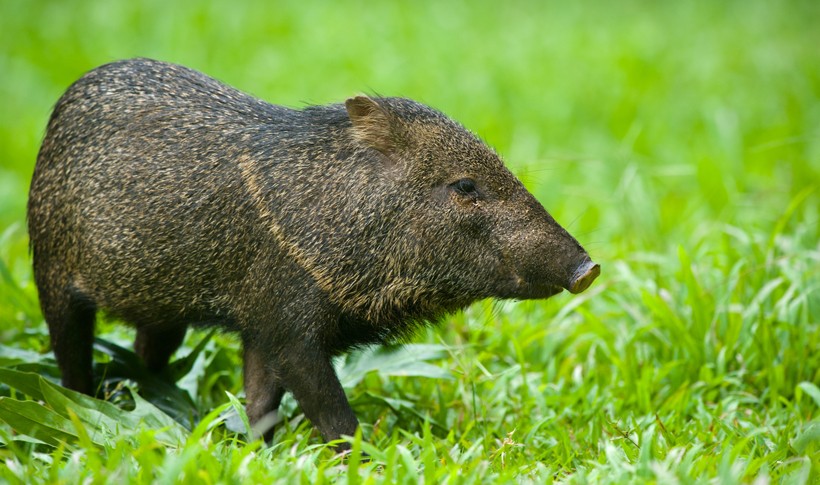
Collared peccaries are omnivores, and can be seen feeding on cactus, grasses, insects and small snakes
?
Image credits: Eduardo Rivero/Shutterstock
With such a wide range of potential sources of food, the collared peccary doesn’t have to worry about the loss of seasonal food sources. However, to survive in the wild, the peccaries have to protect themselves from some of the toughest predators on the planet. Formidable feline hunters like jaguars, mountain lions, bobcats, and other predators like coyotes and pythons, are known to prey on the collared peccaries. But no other predator is deadlier than the humans, who hunt the peccaries frequently for meat and fur. However, the collared peccary is still found flourishing, against all the odds.
Reproduction and Life Cycle
Collared peccaries live for up to 10-15 years in the wild. Females attain sexual maturity between 8-14 months while males get mature once they are above 11 to 12 months. The alpha male of the herd regularly competes with other males and mates with multiple females. As they live in a large herd, the alpha male has to establish his dominance constantly amongst rival males, in order to make sure that his genes are passed on.
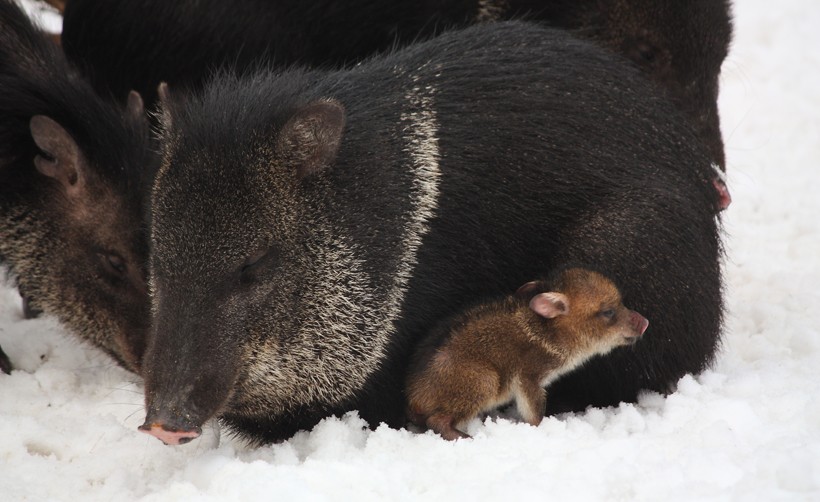
Newborn peccaries, also known as 'reds', living in snow
?
Image credits: Anastasija Popova/Shutterstock
Collared peccaries do not follow any particular breeding pattern and can mate any time of the year. However, larger numbers of baby javelina hogs are born during the wet season. After mating, the female undergoes a gestation period for up to 150 days. The pregnant females move away from the rest of the herd before giving birth as the huge herd can be a threat to the newborns. Collared peccaries give birth to 1-5 baby javelinas per litter and the babies are capable of following their mother soon after birth.
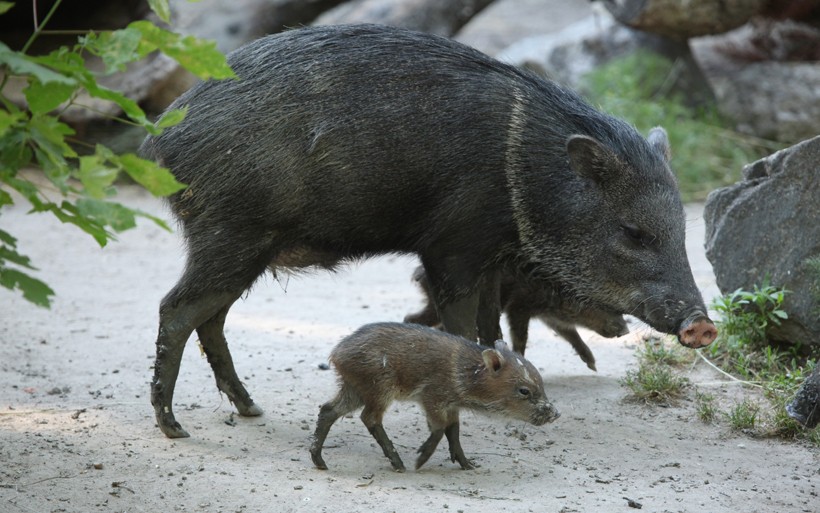
Newborns stay close to the mother until they are mature after 11-12 months
?
Image credits: Vladimir Wrangel/Shutterstock
The day after giving birth, the female reunites with the herd. The babies stay close to the mother and follow her until they are mature at the age of 11-12 months. The mother is highly protective and aggressively protects the babies from other males, as males have a tendency to kill the newborn in order to mate again. During this period, only the older females of the herd are tolerated and allowed to groom the baby. Weaning occurs until the baby is approximately 2-3 months old. Javelina babies are small and can fall prey to smaller predators like foxes, snakes and eagles. Therefore, they are constantly protected and nursed by the mother and older sisters of her herd.
Once being an adult, males have to maintain a submissive attitude towards the alpha male, until they compete and dominate the alpha male to attain mating rights of the herd. The females start breeding as soon as they are sexually mature.
Behavior and Communication
Collared peccaries are diurnal in nature and form large groups that can be up to 50 members strong. They are highly social creatures that are well connected to the members of its band. Collared peccaries groom very often towards each other to reassure bonds. The group is led by an alpha male, who has exclusive mating rights. Males compete very often amongst each other but they rarely turn out to be fatal. The alpha male is usually the largest animal in the herd of collared peccaries.
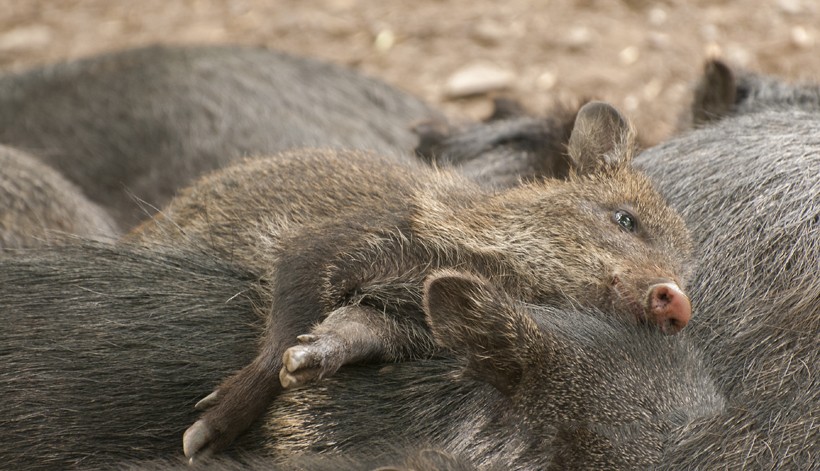
Collared peccary groups can be 50 members strong
?
Image credits: kerstiny/Shutterstock
Collared peccaries communicate with each other using several different sounds. They have distinct calls to express submission, aggression and alarm. Vocalisations are an integral part of the collared peccary community.
Collared peccaries usually avoid human presence and are, unless threatened, not harmful to humans. They usually visit human settlements in search for an easy meal. When under threat, the collared peccary sends an alarm call to the rest of the herd. They make clacking and barking sounds to warn the enemy, before finally charging to bite. Their sharp teeth can yield serious damage to the predator.
Collared peccaries are also highly territorial in nature. They have scent glands on their rump, which helps them in establishing territories and identifying members of their herd. They constantly mark their territory by rubbing their hind part on the ground and on tree barks. When the territory is under threat, the males co-operate like a team and won’t hesitate to use their tusks and strength against neighbouring groups of javelinas.
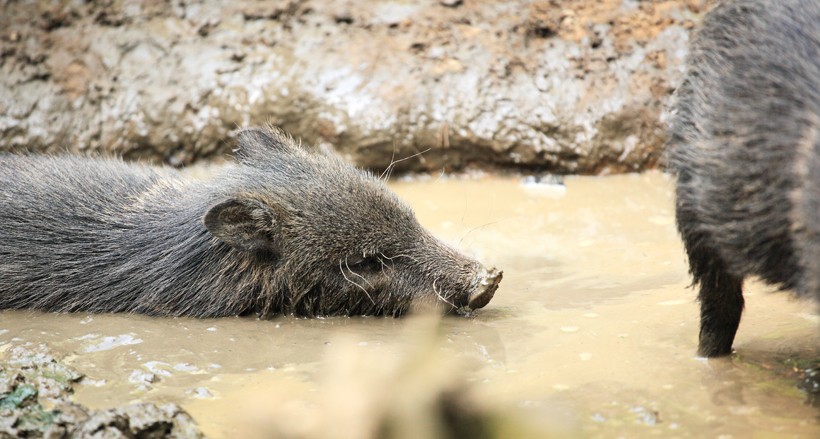
Subgroups often travel far in search of food and reunite afterwards later on.
?
Image credits: jankamenar.com/Shutterstock
They travel with the herd and feed on a wide range of items. They are also highly opportunistic animals. Their social living and range of vocalisation are clear indications that the collared peccaries are quite intelligent mammals, capable of surviving under harsh conditions.
Population and Conservation
Collared peccaries inhabit South America, Central America and South-western North America. They are actively hunted by predators but their range of expansion and adaptable nature enables the species to survive even under the toughest circumstances. Although the javelina population is not under any serious threat, some subspecies experience tremendous pressure due to habitat loss and human activity in their habitat. They have a tendency to raid crops in fields and as a consequence, locals see these creatures with hatred and set traps or shoot them to save their crops from being raided.
To capture them, and releasing again far away from humans, is a very difficult task. When a peccary is captured from a rural settlement, researchers have to carefully release the peccary back in its own herd. These social animals cannot survive alone; as such they can be easily hunted by predators or killed by other herds of collared peccaries. But releasing a collared peccary back in its own herd also means that the animal will stay in the same area and will probably visit the human settlements again and again. As catching a complete herd is almost impossible, the survival rate of captured and released individuals is recorded to be very low.
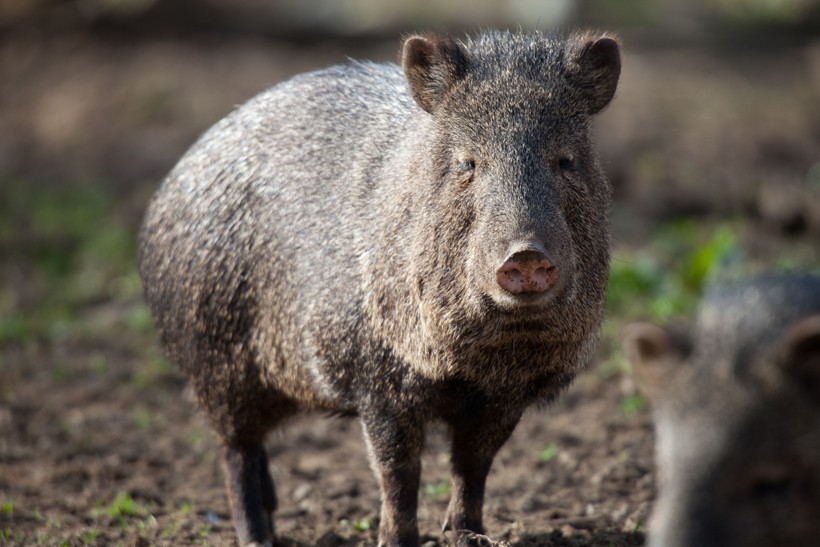
Peccaries are social animals and will not survive alone
?
Image credits: Tom Middleton/Shutterstock
However, despite all the threats, collared peccaries are found in large numbers. Their capability of breeding throughout the year, allow them to rapidly increase their numbers. A recent study revealed that there are over 2,000,000 peccaries in South-western North America alone. The javelina population in Central and Southern America is also quite stable. IUCN lists the collared peccary as a species of least concern, as their population is found to be flourishing throughout its range.
Note:
As mentioned above, capture and removal of collared peccaries from its herd often results in death. They are acting in a very integrated social system and cannot survive alone. Collared peccaries can be driven off from fields by spraying vinegar or by making loud noises. Proper fencing can also keep these grazers away from fields. Peccaries can be attracted to trash cans and littered food items; thus, keeping the premises clean effectively keep the collared peccaries away from human establishment normally.
Instead of using fatal methods like traps or guns, the above mentioned simple measures can be used to keep these harmless creatures away from human activities and maintain an acceptable healthy way of co-existence between human and animal.
Evolution
Approximately 40 million years ago, the peccary family split from the Suidae family of boars and pigs. During the Oligocene period, they were flourishing on the North American continent. They migrated southwards only 2.5 million years ago when the land bridge between North and South America was revealed. Later on, the peccary family were further split into 3 types, giving rise to the white-lipped peccary, chacoan peccary and the collared peccary species.
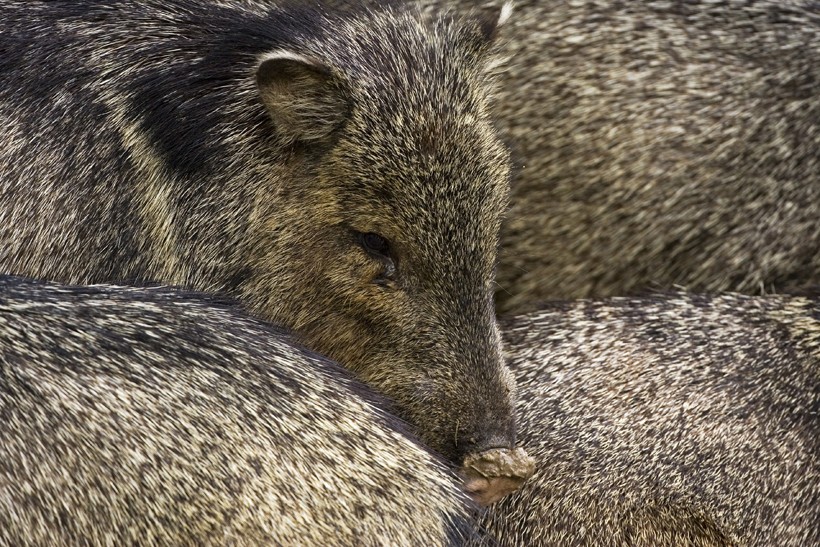
Javelina group, irrigation water Rio Grande Village (texas)
?
Image credits: Fred LaBounty/Shutterstock
The Platygonus is one of the oldest known relatives of all modern peccaries. Several found fossils ranging from 10 million years to 11,000 years ago revealed that several species of the genus Platygonus flourished in North America. This genus of the Tayassuidae family was thus considered to be endemic to the North American continent. The Platygonus peccaries share remarkable similarities with modern peccaries. Their skull, dentitions and physical structure were quite similar to collared peccaries. It is also speculated that the Platygonus must’ve shared similar behavioral characteristics as well.
Funfacts
- They look like pigs and boars but belong to a completely different family named, Tayassuidae.
- Their teeth are razor sharp; the canines are tightly aligned and sharpen every time the peccary opens its jaws.
- They are highly adaptable, capable of surviving and flourishing in tropical rainforests and deserts alike.
- They adapt to survive; as a result, there are 14 different subspecies of collared peccaries existing in the wild.
- They can run faster than the fastest human. Collared peccaries have been clocked at a top speed of 35 miles per hour, approximately 57km/hr.
- Though they are very calm in nature, they can become highly aggressive when under threat.
